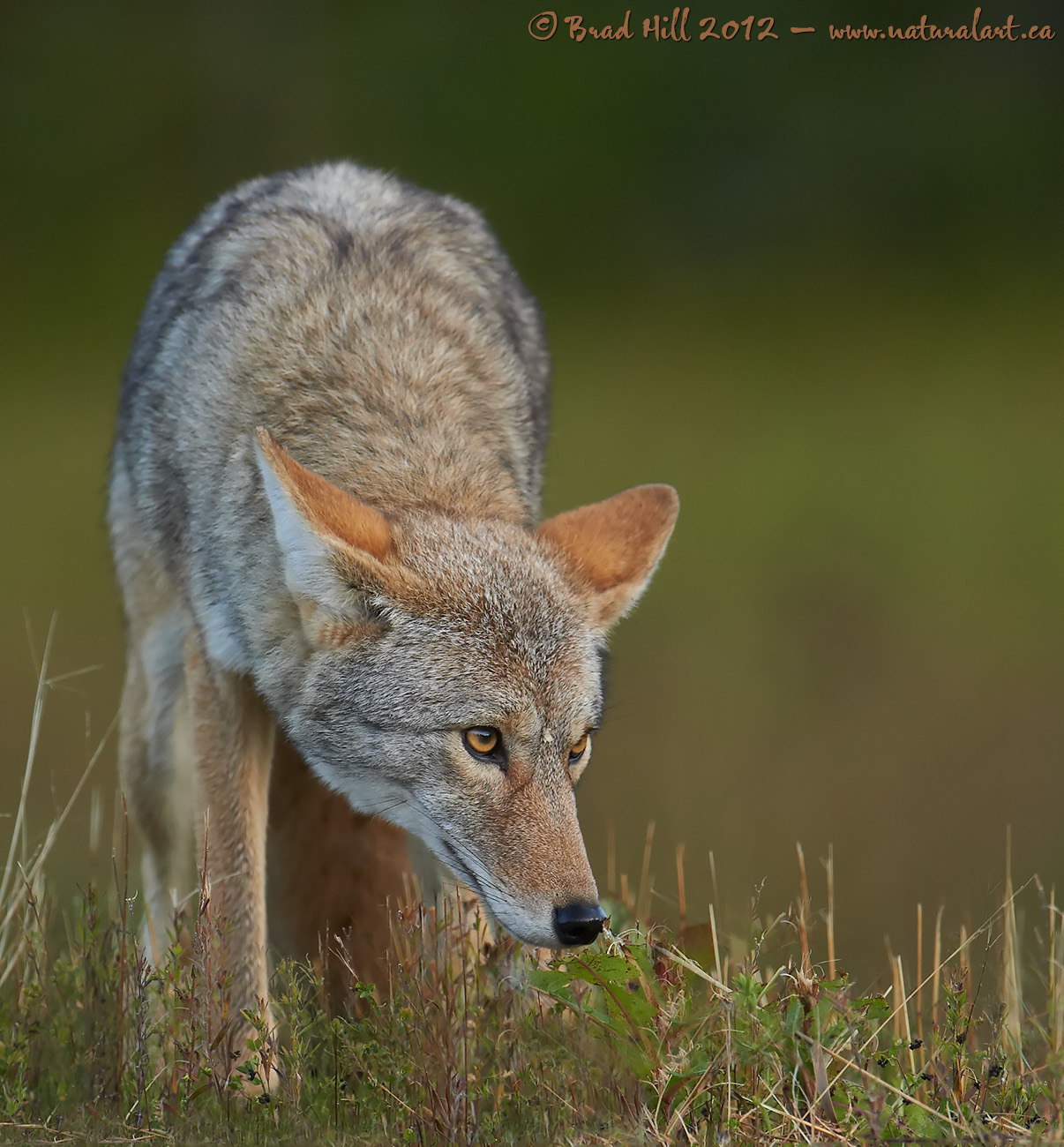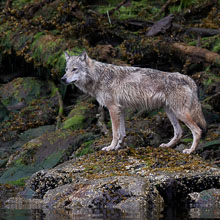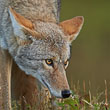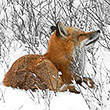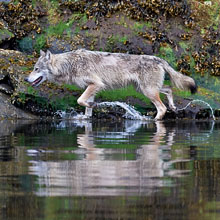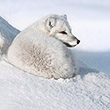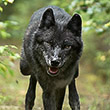Availability: Undetermined - Enquiries?
In the Field
Circumspect. Kootenay National Park, BC, Canada. September 14, 2012.
I have an admission to make: I love wild animals (and some selected not-so-wild ones too, like my two Portuguese Water Dogs!). Part of it is their sheer beauty - as a biologist with training in evolution I'm always amazed how such beauty has arisen over many millennia (and if you'd prefer to believe that the beauty is an outcome o some divine force - I'm fine with that). But even more than the aesthetics, I'm amazed and intriqued by the behaviour of wild animals. I caught this female coyote giving this look as it paused along the side of a busy highway and seemed to be deciding if the potential reward for crossing the road was worth the risk of doing so. It may be anthropomorphic, but I think it's hard to look at this photo and not think the coyote is pondering some decision...
Two further comments about this photo and the situation that lead to it. First, even though I shoot images almost daily and tend to use some pretty nice equipment, I'm still amazed at what advances in camera technology have meant to our images and what we can even consider shooting. This image was captured early in the morning, before the sun had even rose above the mountains that were surrounding me. In short, while it wasn't dark, there wasn't a whole lot of light. We saw this coyote along the edge of the highway while driving along and knew we had to move fast to get the images - there was no time to get out tripods out and set up. I had my 600mm lens on my D4 at the time and it was literally "grab camera, point, adjust a few settings, and shoot". So this image was captured while hand-holding a 600mm lens (while sitting cross-legged on the other side of the highway) at ISO 2000. Stuff you couldn't even imagine doing a few years back. Cool.
Second, this image was captured during a week when I had an enthusiastic wildlife photographer from The Netherlands with me for private tutoring. It's real easy to assume that the way you have always done things is the way everyone does them. But early in the week I realized that what comes "natural" to me is definitely NOT what would come "natural" to others. Early in our week together we were discussing how we actually shoot images. My client (who I call by his real name - Henk) had always focused on a subject (locking on using Single-Servo AF mode) and, once locked on the subject, then recomposed his shot. I have always composed my image first, then toggled my AF bracket to where it was needed to get the right part of the image in focus. And, I almost always use Continuous-Servo AF mode. So, the first thing Henk does is focus, while the last thing I do before capturing the image is focus. No right or wrong here - just different approaches to the same end. And, if one's subject is stationery it should make no difference at all to the final outcome. But, animals move - that's why I like focusing at the absolute last moment before I click the shutter (and that's also why I like using Continuous-Servo AF - those darned animals move, including in the last microsecond between acquiring focus and triggering the shutter). Does my approach (compose first, focus last) produce a higher percentage of sharp images than Henk's (focus first, compose last) approach? I don't know. But it's something to think about and perhaps experiment with...
NOTE: This image was captured during a 5-day private tutoring session that took place in my home in the beautiful East Kootenays of British Columbia. If you think you might benefit from (or even enjoy!) some private tutoring to take your photography to the next level, just check out my Digital Photography Instruction page for more info. Or drop me an email at: seminars@naturalart.ca
Behind the Camera
Circumspect. Kootenay National Park, BC, Canada. September 14, 2012.
Digital Capture; RAW 14-bit format; ISO 2000.
Nikon D4 paired with Nikkor 600mm f4 VRII lens. Hand-held. VR on and set to "normal" mode.
1/640s @ f5; -0.33 stop compensation from matrix-metered exposure setting. Auto ISO engaged with Auto shutter speed enabled (shutter speed keyed to focal length of lens with no compensation).
At the Computer
Circumspect. Kootenay National Park, BC, Canada. September 14, 2012.
RAW Conversion to 16-bit TIFF, including first-pass/capture sharpening using Capture One Pro. Two raw variants (processed from raw) differing by a total of 0.4 stops in exposure: at -0.4 stops and at 0 stop compensation from original exposure.
Further digital corrections on resulting 16-bit TIFF files using Adobe's Photoshop CS6. Photoshop adjustments including compositing the raw conversion variants (layering and masking), selective colour saturation and desaturation, and selective sharpening for web output.
Conservation
Circumspect. Kootenay National Park, BC, Canada. September 14, 2012.
Ten percent of the revenue generated by this image will be donated to Wildsight.
Species Status in Canada*: Not "Endangered" or "Threatened".
The Coyote (Canis latrans) is anything but endangered. Its historical range has expanded dramatically since the mid 1800's. This range expansion has been in parallel - in both time and space - with the range contraction of the Gray Wolf as it was extirpated over most of North America. Coyotes are now found in a huge array of habitats (including the centres of major cities) from Panama north to about 70 degrees N latitude. The key to the success of the coyote is primarily twofold. First, historically both local coyote populations as well as their overall geographic distribution were kept in check by Gray Wolves. As humans eradicated the wolves with deadly efficiency, more "safe" habitat became available. Second, coyotes exhibit a tremendously plastic behavioural repertoire than is continually expanding. In short, they're amazingly adaptable and intelligent. My hat is off to this clever and fascinating animal - it represents a true species success story. It also serves as a reminder that many factors influence population dynamics and that the removal of one species (in this case the wolf) can have completely unexpected consequences.
Wildsight is an effective conservation organization that protects biodiversity and promotes sustainable communities in Canada's Columbia and Rocky Mountains. Support for Wildsight, through donation or becoming a member, will help ensure that they remain effective in their efforts to conserve threatened or endangered species and ecosystems.
*as determined by COSEWIC: The Committee on the Status of Endangered Wildlife in Canada












